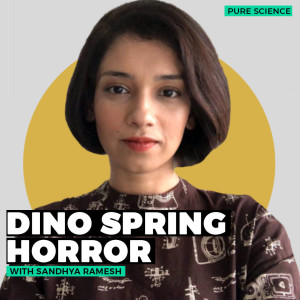

PureScience: Dino asteroid struck in spring, killing northern hemisphere post-hibernation life more
From studying six fish fossils at Tanis, the famous site that documents mass floods from the Cretaceous-Paleogene extinction event, scientists have concluded that the asteroid impact that killed the dinosaurs and 75% of life occurred in the spring season. This was particularly deadly for animals in the Nothern Hemisphere that were coming out of hibernation, but autumn at the Southern Hemisphere and animals stepping into hibernation aided the recovery in this half of the world. ThePrint’s Sandhya Ramesh explains. Brought to you by @Kia India ----more----Subscribe to the Pure Science Telegram Channel https://t.me/PureScienceWithSandhyaRamesh----more----Supplementary reading: During et al., The Mesozoic terminated in boreal spring. Nature (2022). https://doi.org/10.1038/s41586-022-04446-1----more----DePalma et al., Seasonal calibration of the end-cretaceous Chicxulub impact event. Scientific Reports (2021) https://doi.org/10.1038/s41598-021-03232-9 ----more----New Yorker | The Day the Dinosaurs Died (2019), Douglas Preston. https://www.newyorker.com/magazine/2019/04/08/the-day-the-dinosaurs-died----more----Schulte et al., The Chicxulub Asteroid Impact and Mass Extinction at the Cretaceous-Paleogene Boundary. Science (2010) https://www.science.org/doi/10.1126/science.1177265
More Episodes
All Episodes>>Create Your Podcast In Minutes
- Full-featured podcast site
- Unlimited storage and bandwidth
- Comprehensive podcast stats
- Distribute to Apple Podcasts, Spotify, and more
- Make money with your podcast












